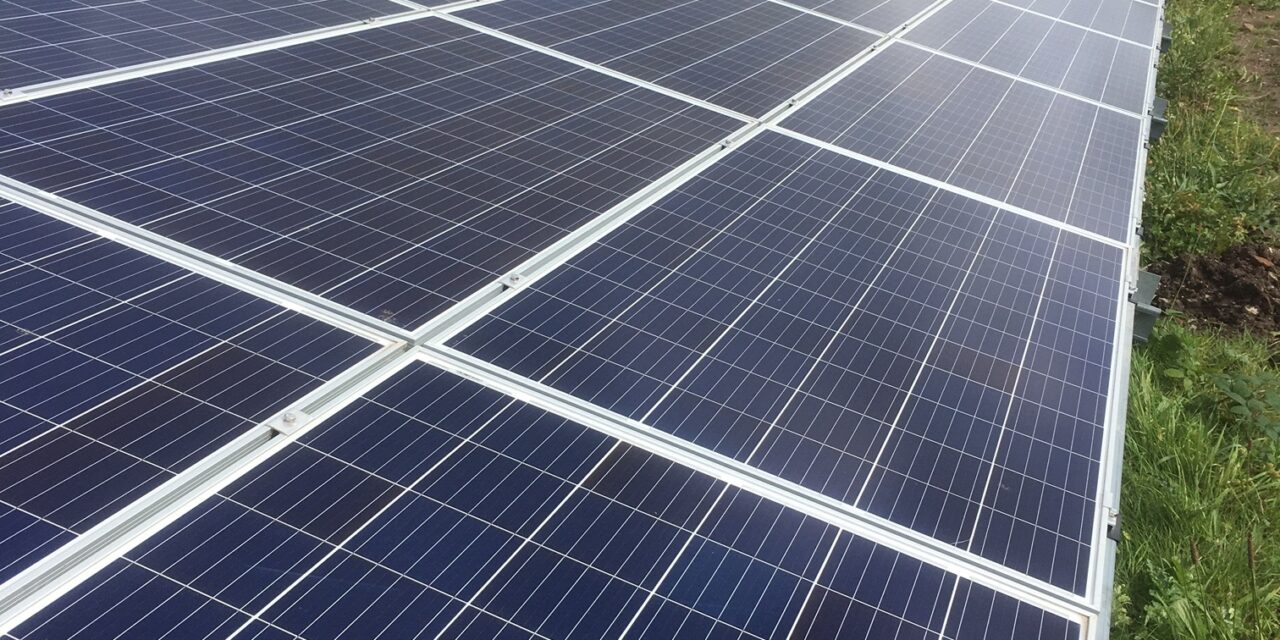
An array of panels at the Halton Borough Council’s new solar farm. Image: Halton Borough Council.
Halton Borough Council is celebrating the completion of a new solar farm, set to power the DCBL Stadium Halton.
The 1MW site has more than 3,000 PV panels, and will generate around 850,000kWh a year. Of this, around 45% will go to the stadium while the remainder will be exported to the grid.
Located on former derelict brownfield land in Widnes, part of the St Michael’s Golf Course site, the solar farm cost approximately £1.2 million and was part funded by the European Regional Development Fund (ERDF), with the council providing the remainder of the cost.
Cllr Stef Nelson, the council’s portfolio holder for the Environment, said: “I am delighted that the solar farm is up and running and generating reusable energy for the stadium. This project is the latest in a number of renewable energy schemes previously implemented by the Council. It has enabled us to bring back into use a brownfield site, support our ongoing ambitions to reduce the Council’s carbon footprint and help to reduce the running costs of the stadium so we can redirect funding to frontline services.”
The solar farm was designed and built by Scottish renewables company Absolute Solar and Wind, while energy services business Horizon Power and Energy provided technical, commercial and project management support to the council.
It was constructed on contaminated ground, and required a 2km high voltage private wire cable to run through a public highway to the stadium, making it a “challenging project” according to Tom Newall, from Absolute Solar and Wind.
The solar farm follows a number of solar projects from Lancashire-based Halton Borough Council, including a £10 million scheme to rollout solar on council buildings such as schools.
Ernie Shelton, director at Horizon Power & Energy, said the DCBL Stadium Halton project was a “great illustration of how local authorities and businesses can use underutilized land to reduce their energy costs and carbon footprint.”

